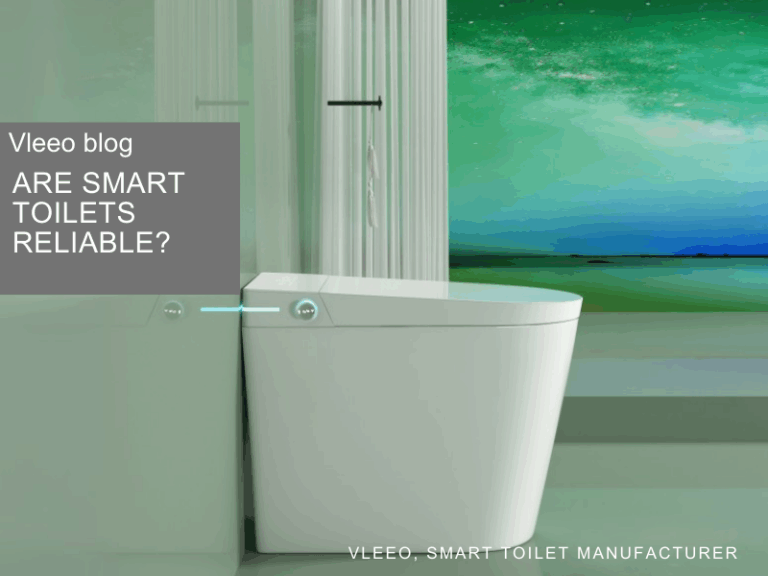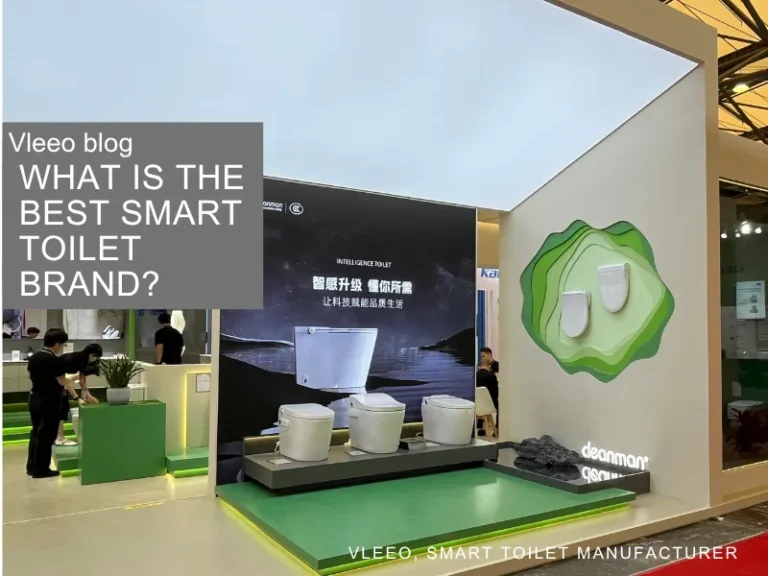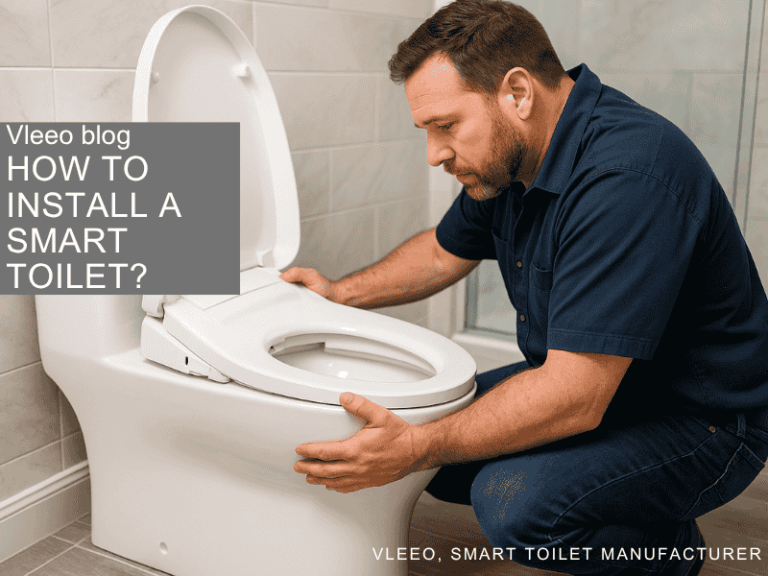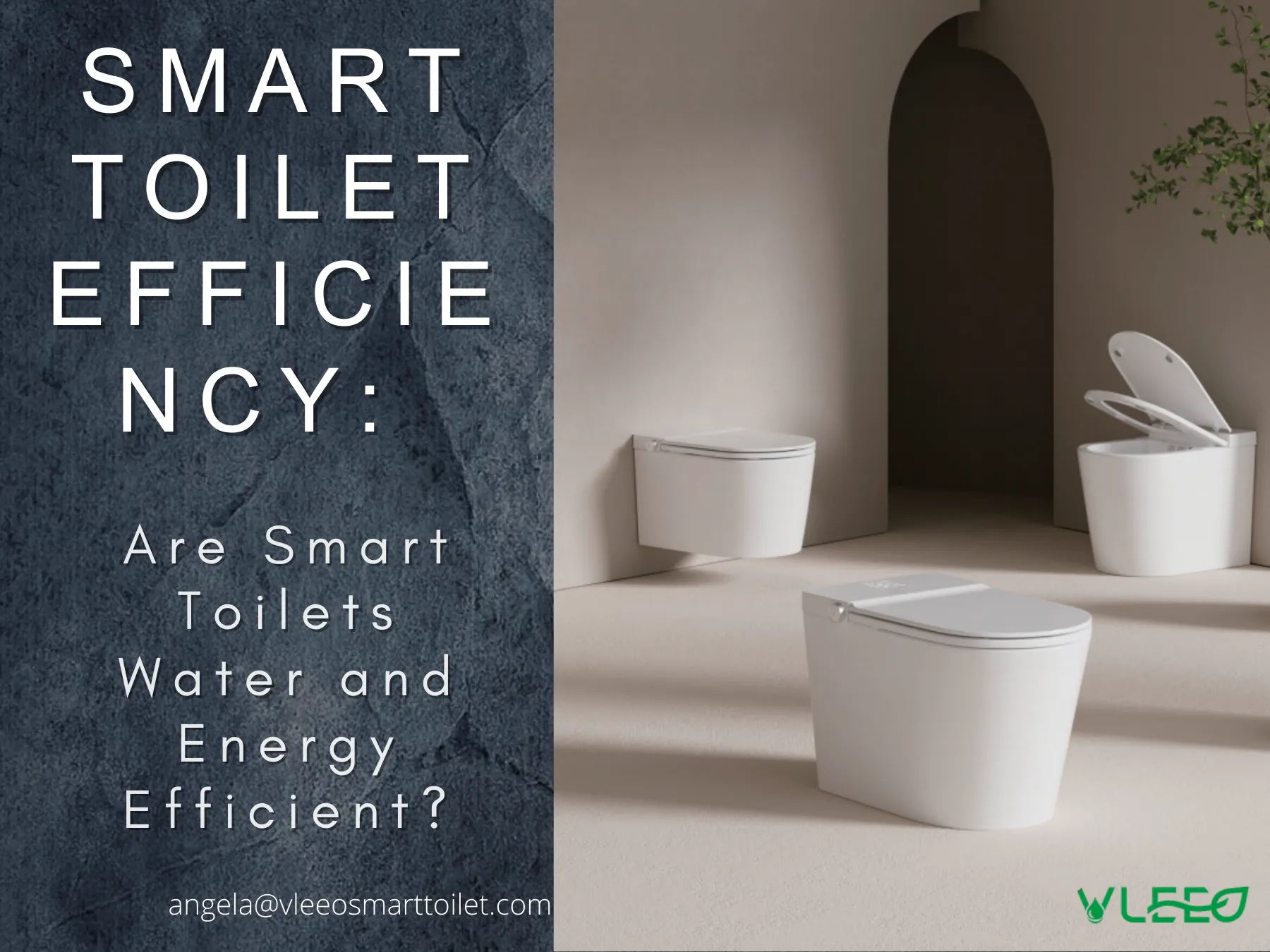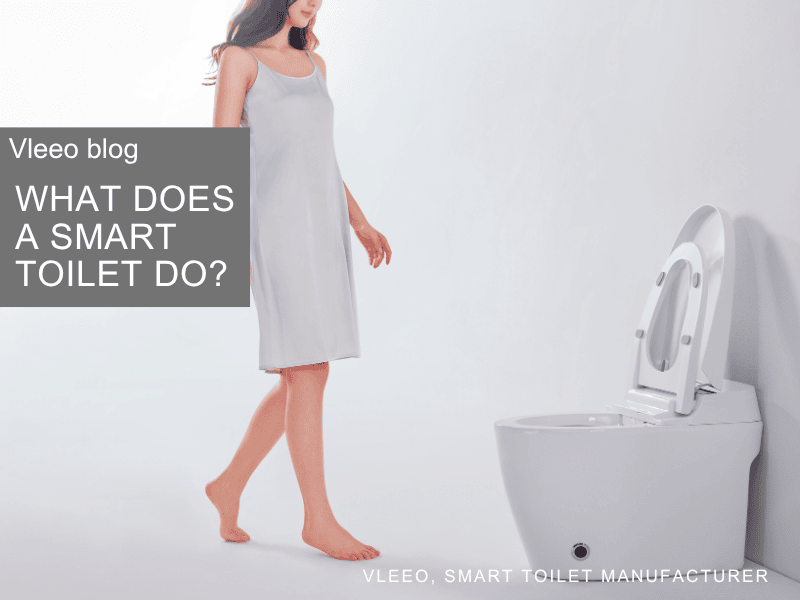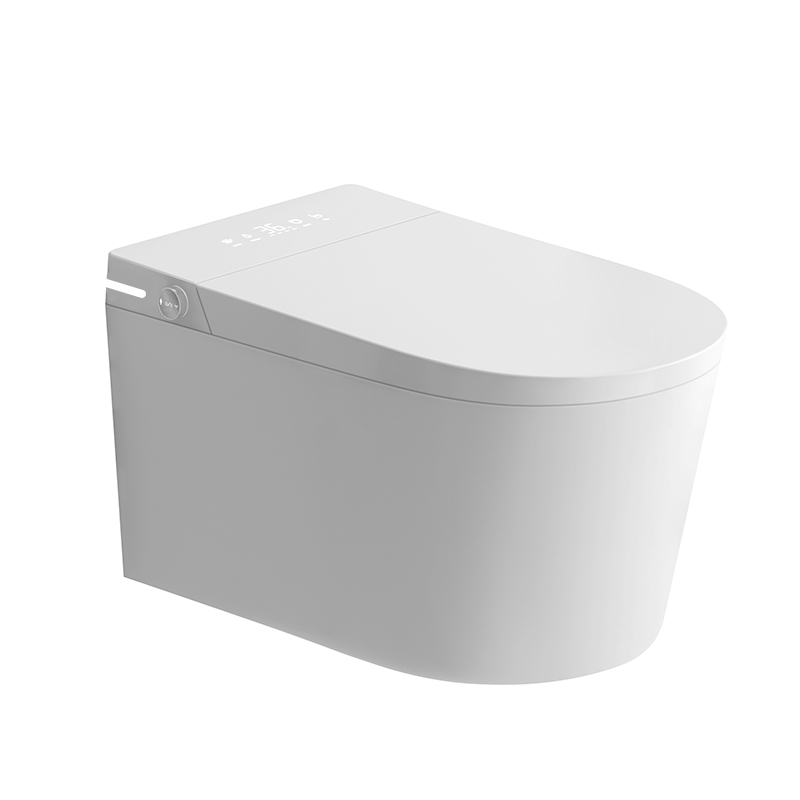-
Guxiang Town, Chaozhou City, Guangdong-provinsen, Kina
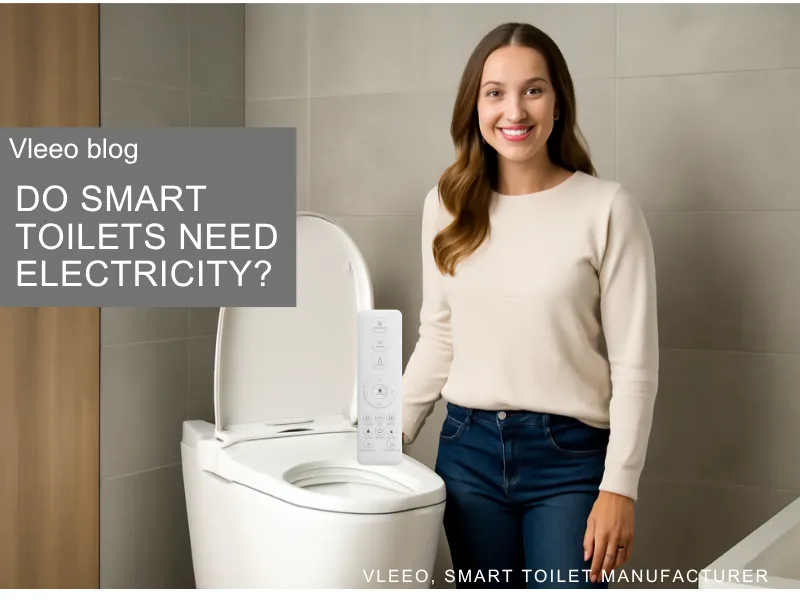
Har intelligente toiletter brug for elektricitet? 7 vigtige punkter, du skal kende
Introduktion: Har intelligente toiletter brug for elektricitet?
Intelligente toiletter er blevet en integreret del af moderne badeværelsesdesign og tilbyder en række Luksusfunktioner, herunder opvarmede sæder, bidetsystemer og automatisk udskylning. Men mange mennesker spørger stadig: "Har intelligente toiletter brug for elektricitet?"
I denne artikel tager vi fat på dette almindelige spørgsmål ved at undersøge, hvilke smarte toiletfunktioner kræver elektricitethvor meget elektricitet de bruger, og om der er Ikke-elektriske muligheder tilgængelig. Til sidst vil du have en klar forståelse af de intelligente toiletters strømbehov og være klædt på til at træffe den rigtige beslutning for dit badeværelse.
1. Hvad er et smart toilet?
A Smart toilet er et højteknologisk toilet udstyret med avancerede funktioner, der er designet til at forbedre komfort, hygiejne og bekvemmelighed. Disse funktioner omfatter ofte:
Opvarmede sæder for varme og komfort.
Bidet-funktioner med en vandspray til personlig hygiejne.
Automatisk gennemskylning baseret på bevægelsessensorer.
Selvrensende dyser der desinficerer sig selv efter brug.
Deodoriserende systemer for at opretholde et friskt miljø.
Teknologien bag disse funktioner kræver ofte elektricitet, især for mere avancerede modeller. Men ikke alle intelligente toiletter er ens - nogle Grundlæggende modeller har ikke brug for elektricitet for at fungere.
2. Har alle intelligente toiletter brug for elektricitet?
Elektriske vs. ikke-elektriske modeller
Ikke alle intelligente toiletter kræver elektricitet. Der er to hovedkategorier:
| Type af smart toilet | Kræver elektricitet | Funktioner |
| Elektriske intelligente toiletter | Ja | Opvarmede sæder, automatisk skylning, selvrensende dyser, bidetspray, lufttørrere |
| Ikke-elektriske smarte toiletter | Nej | Manuelle bidetfunktioner, vandbesparende skyllesystemer |
Elektriske intelligente toiletter: Disse toiletter har funktioner som Opvarmede sæder, automatisk skylningog selvrensende mekanismersom alle kræver elektricitet. De tilbyder en fuldt automatiseret oplevelse.
Ikke-elektriske smarte toiletter: Nogle modeller, som f.eks. Prisbilligt semi-smart toiletbidet fra Vleeogiver grundlæggende smarte funktioner som f.eks. manuelle bidetfunktioner og vandbesparende skyllesystemer, men er ikke afhængige af elektricitet. Disse er ideelle til dem, der ønsker en mere budgetvenlig eller miljøvenlig mulighed.
Mens Semi-smarte toiletter har ikke brug for elektricitet, de fleste Førsteklasses funktioner der gør smarte toiletter virkelig "smarte", kræver strøm.

3. Hvilke funktioner i smarte toiletter kræver elektricitet?
Her er en oversigt over Nøglefunktioner som typisk kræver elektricitet for at fungere:
Opvarmede sæder: Giver varme og komfort i de kolde måneder. Disse kræver elektricitet for at drive sædevarmeelementet.
Bidet-funktioner: Evnen til at opvarme vand og justere trykket for en mere behagelig bidetoplevelse kræver elektricitet.
Selvrensende dyser: Disse dyser renser sig selv efter hver brug og bruger elektricitet til at aktivere rengøringscyklussen.
Automatisk skylning: Sensorer og motoriserede systemer gør det muligt automatisk skylningsom kræver strøm for at fungere.
Lufttørring og deodorisering: Disse funktioner, som tørrer og deodoriserer efter brug, bruger elektricitet til at drive ventilatorerne og filtrene.
Mens disse funktioner giver en luksuriøs oplevelseer de afhængige af elektricitet til at fungere effektivt.
4. Findes der smarte toiletter uden elektricitet?
Mens de fleste avancerede intelligente toiletter kræver strøm, nogle ikke-elektrisk models tilbud grundlæggende smarte funktioner. Disse toiletter kan have manuelle bidetfunktioner eller Vandbesparende skyllesystemer uden at have brug for elektricitet.
For eksempel kan Prisbilligt semi-smart toiletbidet fra Vleeo er en fremragende mulighed for dem, der vil have en grundlæggende smart toiletoplevelse men uden behov for elektricitet. Det tilbyder manuel bidetfunktionalitet og Vandbesparende skyllesystemermen den indeholder ikke de mere avancerede funktioner, der er afhængige af elektricitet.
Disse modeller er især nyttige for dem, der bor i områder med upålidelig elektricitet eller for dem, der foretrækker minimalt elforbrug.
5. Hvor meget elektricitet bruger smarte toiletter?
Strømforbrug for smarte toiletter
Intelligente toiletter er generelt energieffektiv. Men deres strømforbrug afhænger af de funktioner, du vælger at bruge. Her er en oversigt over, hvor meget strøm de forskellige funktioner bruger:
| Funktion | Gennemsnitligt strømforbrug | Beskrivelse |
| Opvarmede sæder | Op til 100 watt | Strømforbruget afhænger af brugsfrekvens og indstillinger. |
| Bidet-funktioner | 250 til 400 watt pr. brug | Energi til opvarmning af vand til bidetspray. |
| Lufttørrere | Op til 500 watt | Bruges under tørrecyklussen efter brug af bidetsystemet. |
| Standby-strøm | Minimal | De fleste intelligente toiletter bruger meget lidt strøm, når de er inaktive. |
Miljøvenlige intelligente toiletter
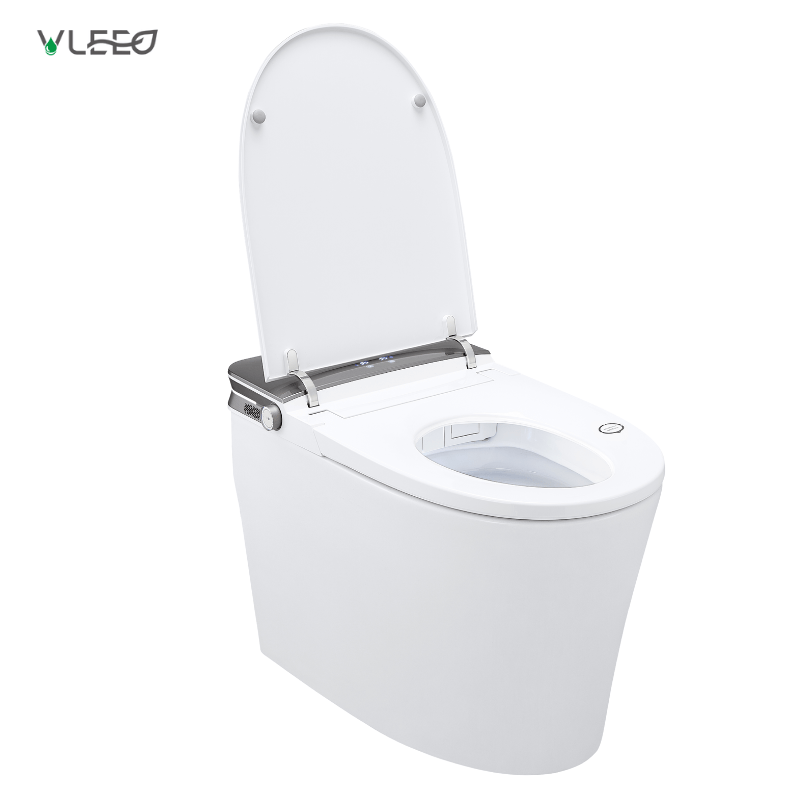
Mange moderne intelligente toiletter har en Øko-tilstand der reducerer energiforbruget uden at gå på kompromis med komforten. Det gør dem til en mere miljøvenlig mulighed, mens den stadig har vigtige funktioner som opvarmede sæder og lufttørring.
6. Installation af smart toilet: Hvilken elektrisk opsætning er nødvendig?
Krav til elektrisk opsætning og installation
Når du installerer et smart toilet, skal du sørge for, at der er en Strømudtag i nærheden. Nogle smarte toiletter kræver en GFCI (jordfejlsafbryder) stikkontakt af hensyn til sikkerheden, da badeværelser er våde miljøer, og risikoen for elektrisk stød er større.
Her er, hvad du bør overveje, når du installerer dit intelligente toilet:
Dedikeret strømudtag: Smarte toiletter, der kræver elektricitet til funktioner som Opvarmede sæder og bidet-funktioner har brug for en stikkontakt i nærheden af toilettet.
Korrekt ledningsføring: Hvis din model indeholder avancerede funktioner, kan det være nødvendigt at konsultere en professionel for elektriske ledninger justeringer.
Opsætning af VVS: Ud over elektricitet har et smart toilet stadig brug for en pålidelig vandforsyning til at aktivere bidetsystemer, skyllemekanismer og meget mere.
Hvis du er usikker på, hvordan du skal håndtere den elektriske opsætning, er det bedst at rådføre sig med en autoriseret elektriker eller Blikkenslager for at sikre en sikker og effektiv installationsproces.
7. Kan smarte toiletter fungere under strømafbrydelse?
Intelligente toiletter under strømsvigt
Hvis en Strømafbrydelse sker, vil mange avancerede smarte toiletfunktioner holde op med at virke, især dem, der er afhængige af elektricitet. For eksempel, Opvarmede sæder, automatisk skylningog bidet-funktioner fungerer ikke uden elektricitet. Nogle toiletter har dog en Backup-batteri for at opretholde grundlæggende funktioner som f.eks. manuel udskylning.
Hvis du er bekymret for strømsvigt, bør du overveje en model med en Batteribackup eller en Ikke-elektrisk alternativ. I tilfælde af strømafbrydelse vil disse modeller stadig levere grundlæggende toiletfunktioner, indtil strømmen er genoprettet.
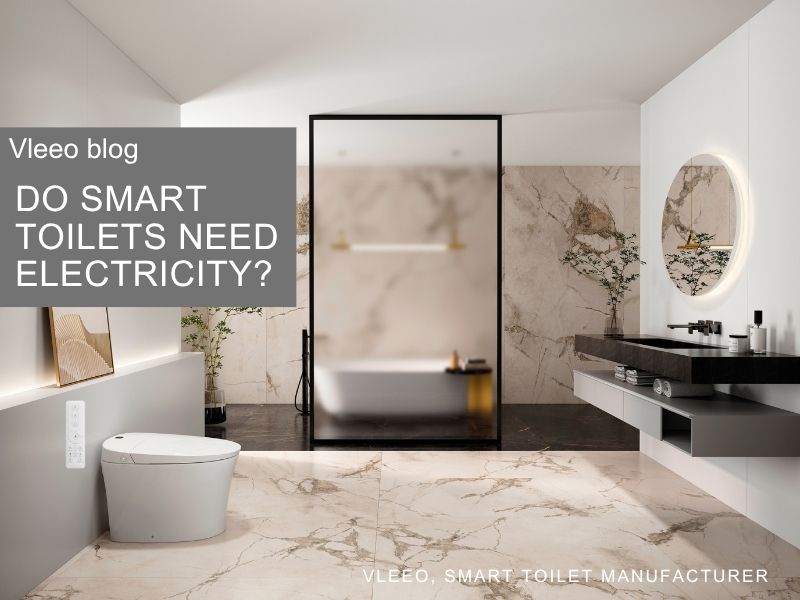
8. Konklusion: Skal du vælge et smart toilet, der kræver elektricitet?
Mens smarte toiletter, der kræver elektricitet, tilbyder Luksus, komfort og avanceret funktionalitetBeslutningen om at vælge en afhænger af dine behov og præferencer. Hvis du er på udkig efter komfort, hygiejneog bekvemmelighed, så en elektrisk smart toilet er sandsynligvis det rigtige valg. På den anden side, hvis du er ude efter en mere miljøvenlig eller budgetvenlig mulighed, en Ikke-elektrisk smart toilet kan passe til dine behov.
For dem, der søger højteknologiske muligheder med avancerede funktioner, modeller som Vleeo Smart Toilet med bidet, selvrensende og opvarmet sæde tilbyder hele spektret af smarte toiletfunktioner.
For at opsummere er valget af, om man skal vælge en Elektrisk drevet smart toilet afhænger af dine badeværelsesbehov, livsstilspræferencer og tilgængelighed af elektricitet.
Vleeo, et smart toiletmærke ejet af Cleanman Sanitetsartiklertilbyder en komplet vidensbase for B2B-købere af smarte toiletter, herunder produkt, salg, promovering og eftersalgsservice. Kontakt os nu for mere.

